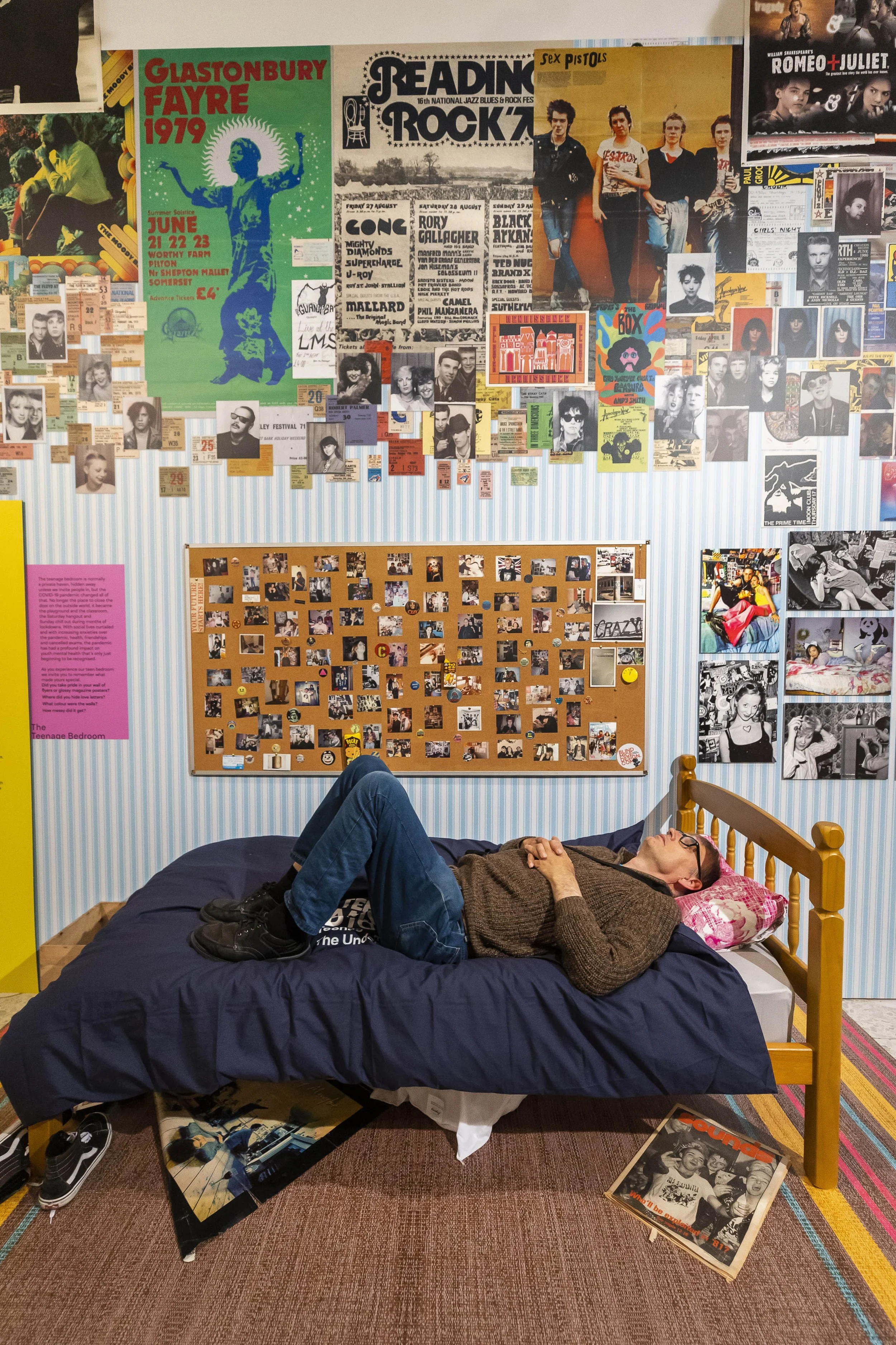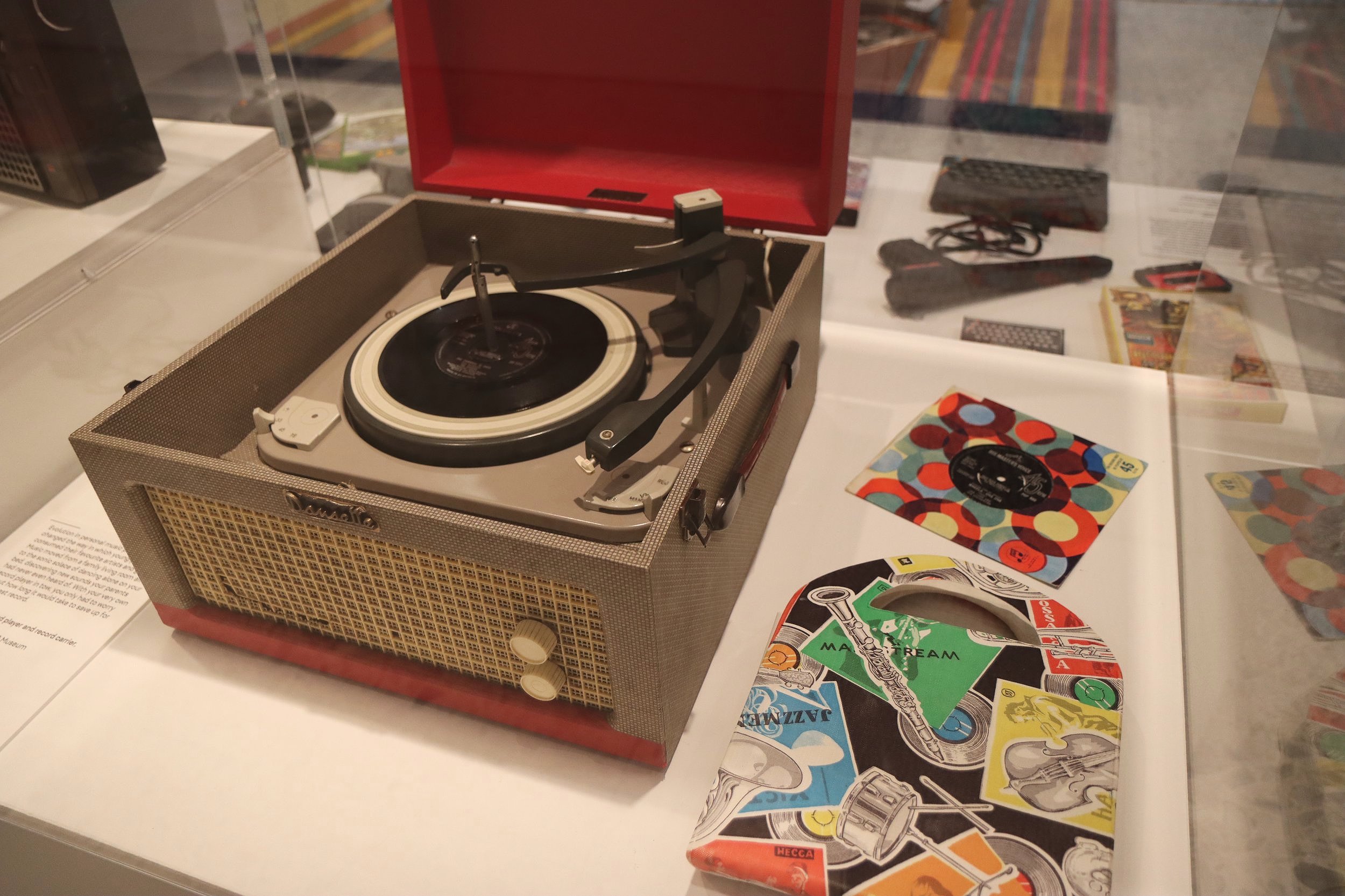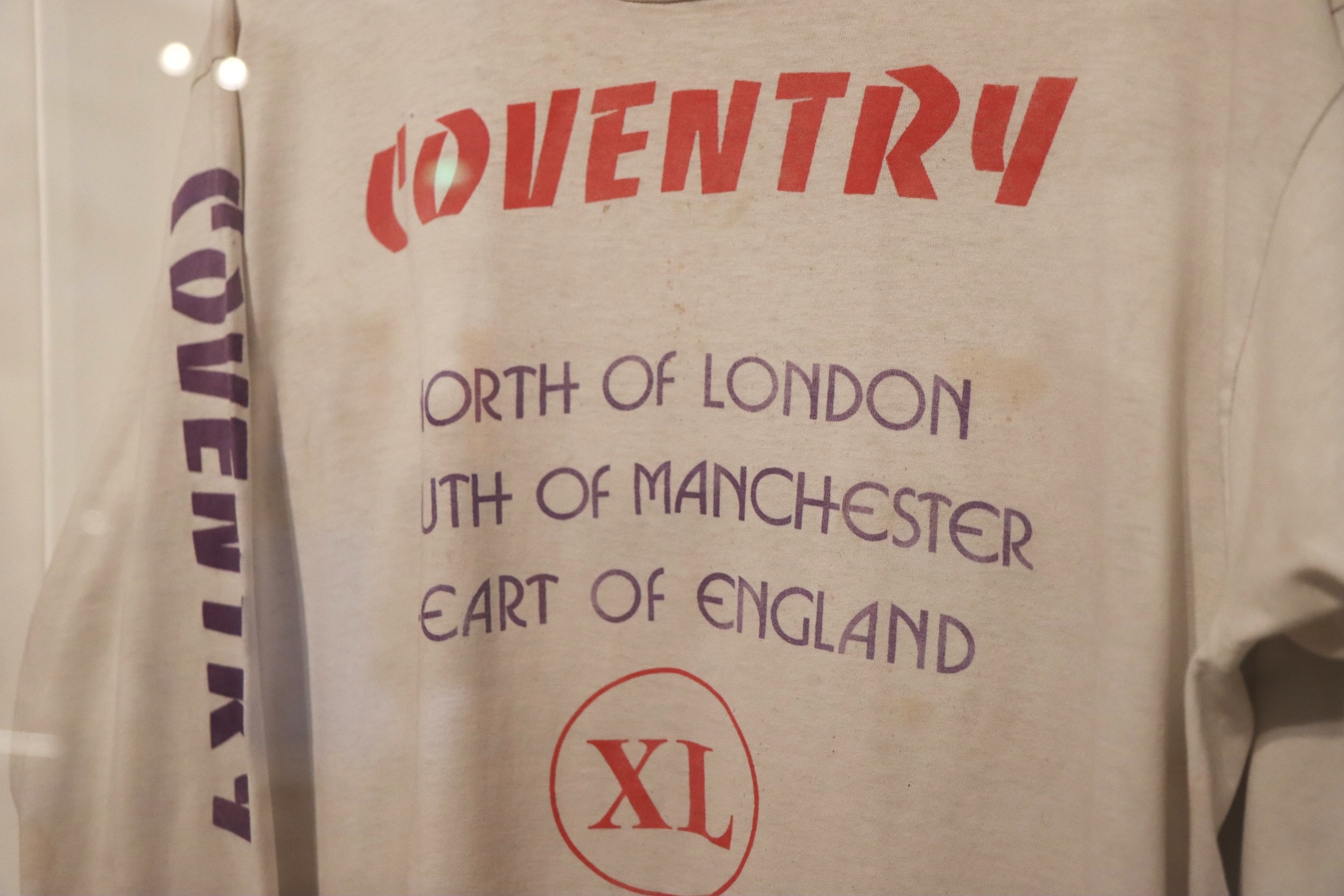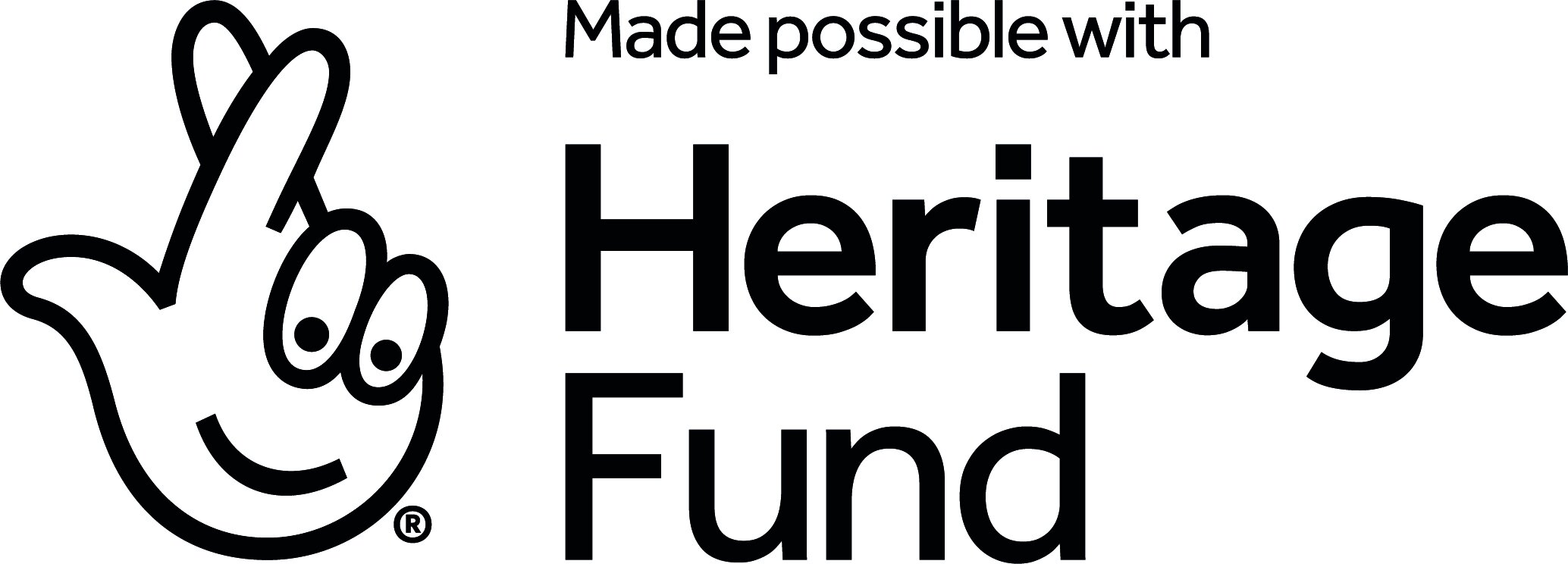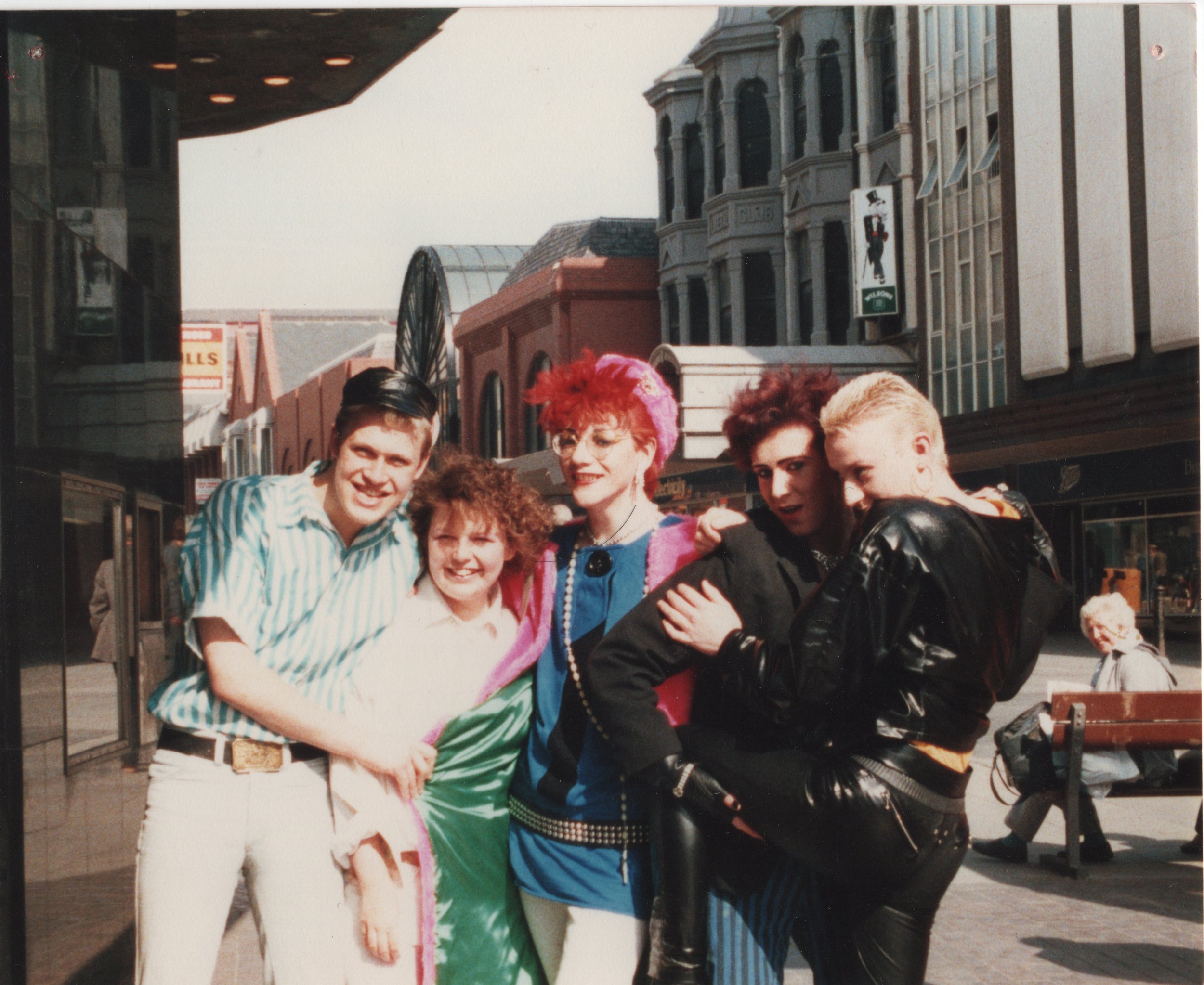
Grown Up In Britain
100 Years of Teenage Kicks
Herbert Art Gallery & Museum
1 July 2022 - 12 January 2023
Grown up in Britain celebrates a century of teenage life from the roaring 20s to the youth of today. Going beyond the headlines, the exhibition chronicles the everyday experiences and cultural impact of young people through photographs, objects and stories. Reflecting the diverse movements that have been forged by youth, the exhibition explores what unites us across generations and asks, “what makes Britain?”
Curated by and drawn from the extensive photographic collections of the Museum of Youth Culture, the exhibition is centered around public submissions representing people’s personal experiences of being young from across the UK, collected as part of the Museum’s ongoing Grown up in Britain campaign. We’ve all been young once, from first loves to first jobs, Saturday hangouts to family holidays - what do you remember?








Fabio De Paola/PA Wire
Explore the exhibition with the Museum of Youth Culture’s Archive Projects Manager Lisa der Weduwe in our video below
The Museum of Youth Culture is an emerging museum dedicated to the styles, sounds and social movements innovated by young people over the last 100 years. Championing the impact of youth on modern society, the Museum has been collecting photographs of youth and subculture movements for over 25 years. From the bomb-site Bicycle racers in post-war 1940s London, to the Acid House ravers of 1980s Northern England, the Museum of Youth Culture empowers the extraordinary everyday stories of growing up in Britain.
You can be part of this exhibition - send in your photographs, objects and stories of being young here: museumofyouthculture.com/coventry
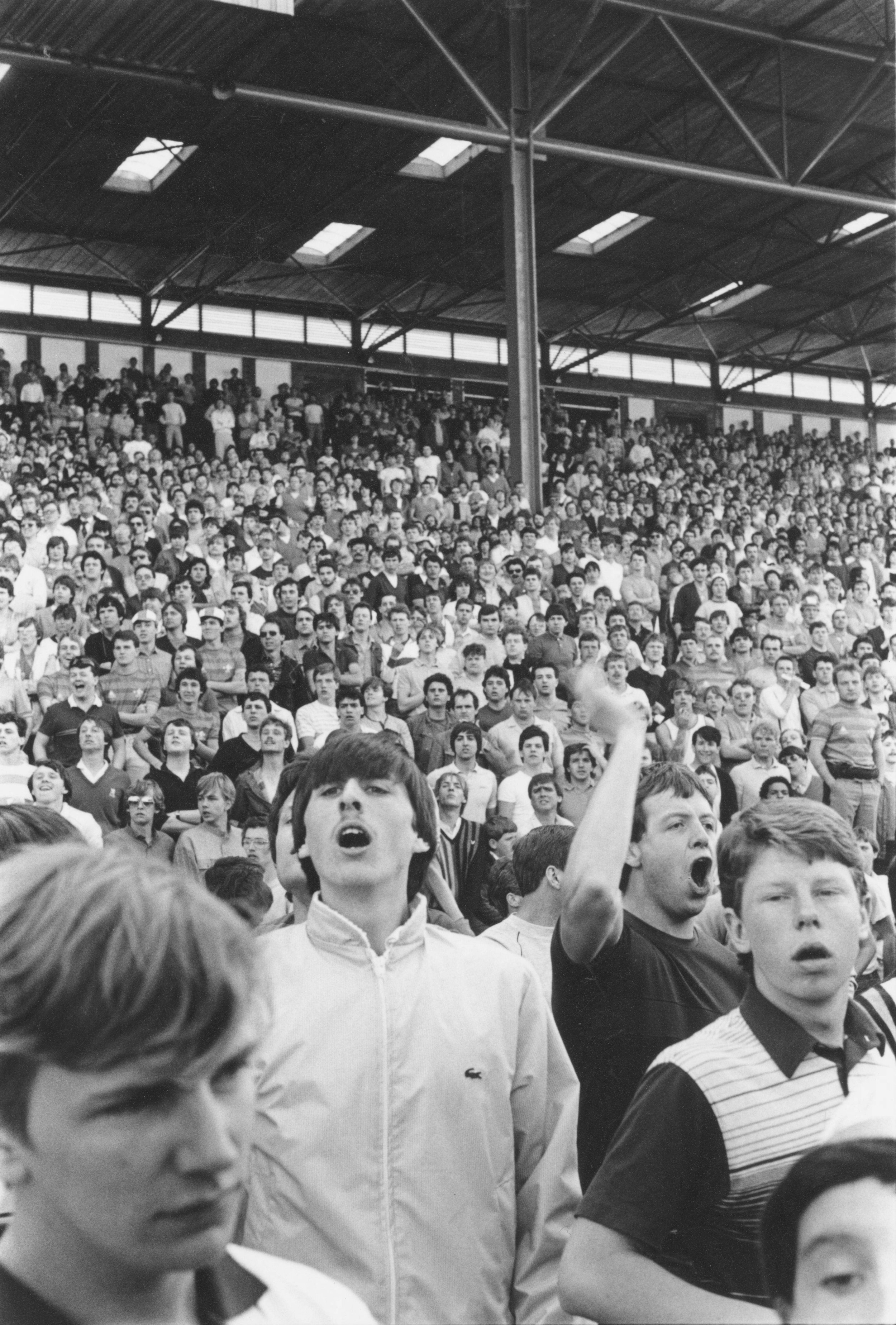
Birth of the Teenager
The term teenager can be traced back to the mid-20th century, capturing the public imagination in the wake or the Second World War. However Teenage Kicks starts its journey before then, in the 1920s, although you could easily trace youth culture's roots further back. Reeling from the aftermath of the First World War and with a high demand for young workers, teenagers with a little money in their pockets escaping the humdrum of everyday life revelled at dance halls springing up across the country and headed to the cinema in droves.
The 1950s saw the emergence of a new and rebellious way to be young. Teenagers gathered to race motorcycles down freshly tarmacked roads which led to widespread moral panic about what exactly British young people were getting up to.
This motorcycle featured on the cover of the Daily Mirror in February 1961 alongside the provocative headline ‘Suicide Club’ and a sensational feature on the new teenage motorcycle subculture. It set the tone for how youth (sub)cultures were to be reported in the media.
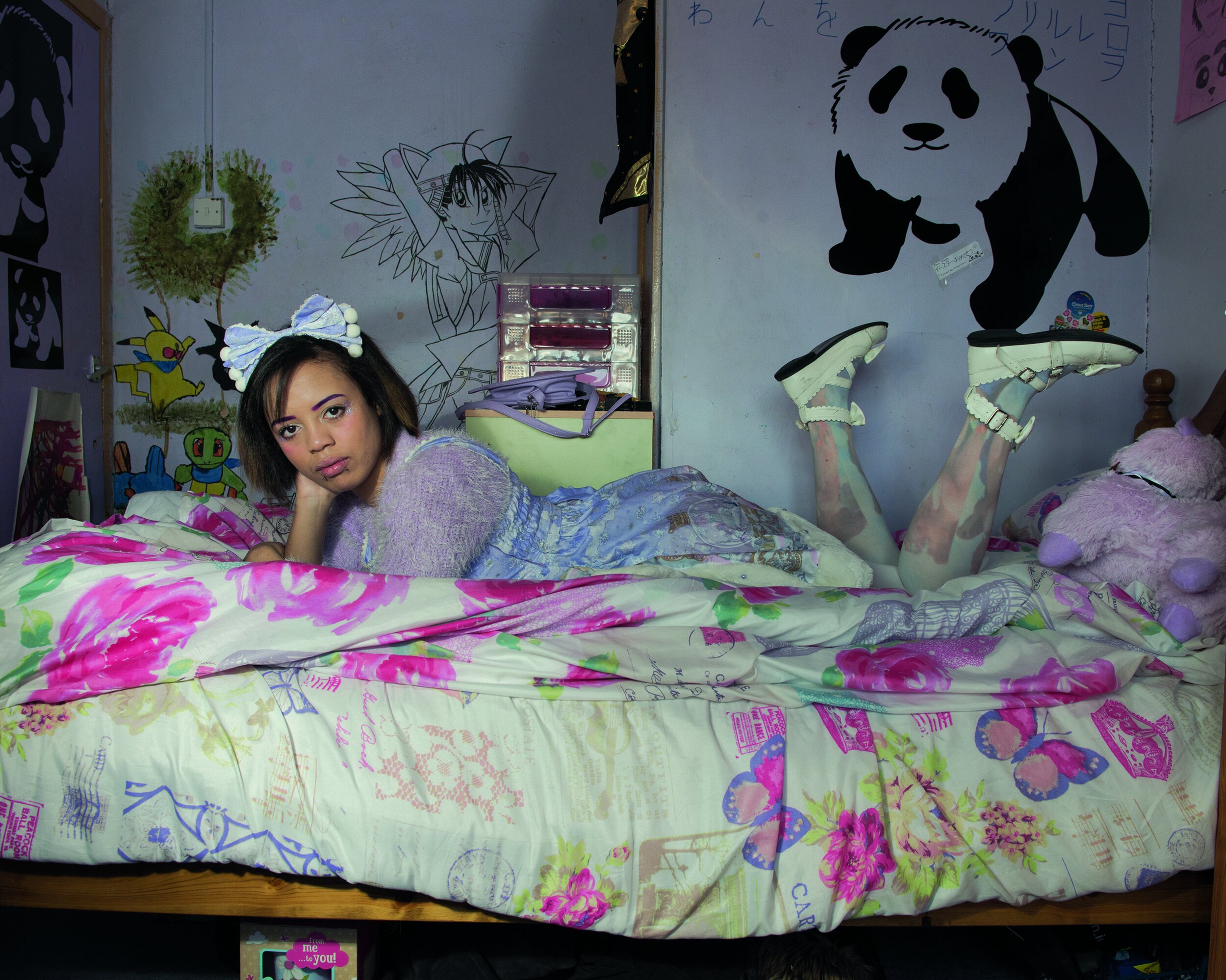
Home & Next Door
Home is the first place we feel comfortable to project who we are and the values we hold. Through our family, carers and communities, we learn about the different roles that people take up in the world, shaping who we will become.
We all experience our own version of homelife depending on generational, cultural and economic differences. While for many home is a safe place, for others it’s a more difficult environment to navigate. Young people may be vulnerable to a changing home, moving between care, refuge and extended family or making it on their own. Wherever home may be we find routine in the mayhem of the morning rush, TV dinners and family gatherings that lead into arguments over generational differences.
The teenage bedroom, whether it is our own or a corner in a shared room, is the first place we get to call our own. It’s a place where we can experiment, and as we discover new and exciting things we can take them back to our room to explore behind the safety of a closed door. Bedroom walls become a canvas to map onto our newfound sense of self - every club flyer found, book passed around, and mixtape filled with new sounds stitched into the tapestry.
The bedroom is the place for listening to new records and dancing to guilty pleasures, whilst family members bang on the door to turn it down. It’s a hub for creating, writing, posting, making music as wannabe stars or bedroom DJs. We experiment with our style with ripped shirts and chopped fringes, recover from fights with siblings, slam doors in our parents’ faces and sneak glimpses of diaries.
Development in technology has seen the computer move from shared family spaces to the smartphones in our pockets. It’s easier than ever for teenagers to communicate with the outside world from the comfort of their room. A similar shift occurred with gaming technology, from playing the Atari or PlayStation with friends and family at home, to the emergence of online gaming and smartphone apps enabling us to play with people across the world.
First jobs plunge us into a world of responsibility and m mark a shift in not just how we are viewed by others, but the part we play in society. These new grown up expectations build confidence and teach us lessons that stick for life whilst supplying that important payslip that paves the way to independence. We might find our way in through the family business or stay local with a paper round, maybe a Saturday job will take us to the high street or the local fast food joint.
Do you remember what you bought with your first pay cheque?
Evolution in personal music players radically changed the way in which young people consumed their favourite artists and genres. Music moved from a family living room affair to the sonic solace of dancing alone on your bed, discovering new sounds your parents had never even heard of. With your very own record player in tow, you only had to worry about how long it would take to save up for the latest record.
The music experience has become increasingly personalised and portable, from blasting music on your boombox to carrying it in your pocket on an iPod. New technologies have made it easier to access more music than ever before and young people can discover songs from any era, breaking down boundaries and diversifying the influences of young musicians today. From the days of recording the charts from the radio onto a cassette tape, to SoundCloud playlists, these innovations in tech represent new avenues to find the soundtrack to your youth.
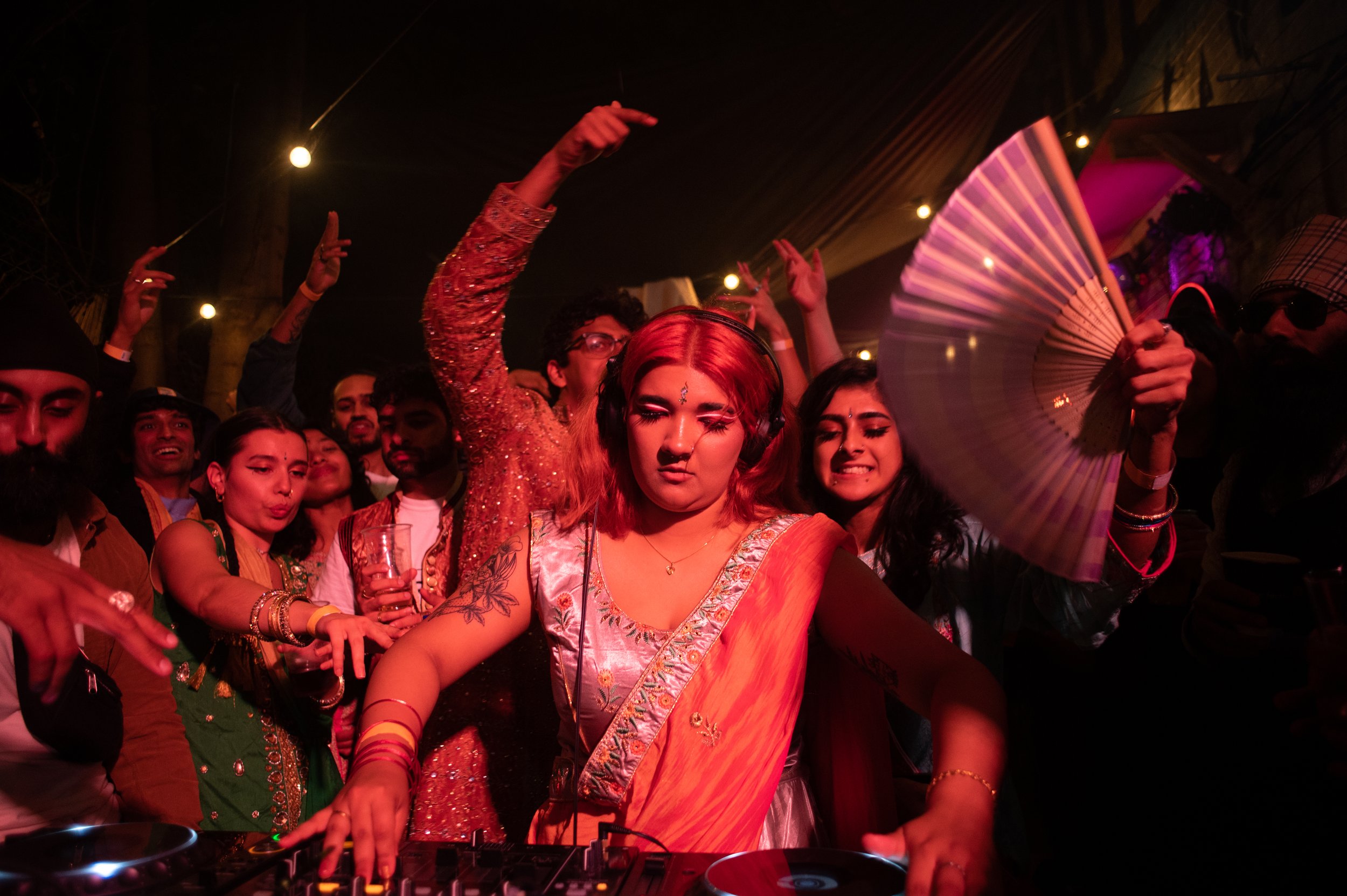
Saturday Hangouts
As we get older, the thing that marks our passage into teenage life is a shift away from family life. We begin to fill our free time with long days spent with friends down the park and round town, meeting at our favourite record shop, grabbing a meal at the local fast food joint and claiming our favourite street corner. All this time spent shaping our days however we choose, represents the slow handover of freedom and independence from home.
From sunrise to sunset we find ourselves abandoning routine in pursuit of adventure. Through camping trips, first holidays with friends and hazy summer Saturdays we find new experiences that shape our sense of self. Days spent outdoors are becoming less common due to technology competing for our attention and public space being lost to developers, however they remain important for our independence and wellbeing.
For many of us, Saturday mornings mean heading out to the local football pitch for a game of 5-a-side or meeting our friends at the BMX track. Saturdays are a time for us to get stuck into the things that we love, whether we are taking part in a sport or cheering on the local team. Weekend outings for match day are both a family and friend affair, and all the more fun when you get to travel for an away game. For many young people fashion and sportswear go hand in hand. Sportswear has become the everyday uniform from the shellsuits of the 80s to leggings and tracksuits of today. Trainer brands established a century ago for sports and comfort are today’s go-to footwear and each scene has its preferred brand.
Facilitating this shift means being able to get as far away from your parents as possible. Getting your first wheels remains a big moment for young people across generations. Bikes remain a rite of passage but the need for speed and independent travel can take many forms. How we get around can become a lifestyle when we get in with the older kids at the skatepark or go on our Saturday ride-out with our scooter or motorcycle tribe. Getting around independently turns the world into an endless racetrack waiting to be discovered.
First wheels come in many different shapes and sizes. Some require us to take lessons and do tests, whilst others are a clumsy progression of trial and error. Getting our first set of wheels gives us a means to escape from our parents’ watchful eye and explore further afield. Many of Britain’s most infamous subcultures have been defined by how they get around - whether it be the mods and rockers on their rival scooters and motorcycles, boy racers in modified hatchbacks, or the skateboards that continue to have wide appeal generation on generation.
Our journey into the night takes time, starting with drawn out conversations at sleepovers that push us past midnight and into the freedom of the unknown. From being home before tea time, we slowly claim more of the nighttime hours as our own. In the shadows of night young people are able to explore themselves in new ways. From floodlit pitches, roller discos and late night pubs, young people fill the hours of darkness away from burdens of the day by passing around cans of cider and spray paint.
British culture has absorbed festivals into its identity. Through the green and pleasant lands, into urban cities up and down the country, first festivals have become a rite of passage for British youth. Each summer thousands descend on fields across the UK to listen to their favourite music, from the behemoths of Glastonbury and Download to the tiny festivals where you know everyone by the end of the weekend. The first was Isle of Wight in 1968 and set the scene for British festival goers.
DIY free festivals of the 60s and 70s brought an independent spirit fused with primordial festivities that culminated in Castlemorton Free Festival in 1994. Jazz, metal and electro all have their moment through the often damp summer months, tents are waved off down muddy streams and lifelong memories are made. Festivals aren’t just about tents in a field though, and Britain has a long tradition of community-led festivals and street parties. In 1959 community leader Claudia Jones organised the London Caribbean Carnival at a local church following the Notting Hill Race Riots. In 1966 the first outdoor event was held and now the Notting Hill Carnival is Europe’s largest street party. From St Paul’s in Bristol to Moss Side in Manchester, Caribbean carnivals are a staple of the British summer. In 1988 the South Asian community in Nottingham organised the first Mela in the UK. It was a two day festival celebrating Asian music and culture which has led to Melas across the country.




The flyer is the party’s calling-card and often the first impression a punter will get. From telling people when and where to go, to evoking an emotion related to the music, or just building hype, getting your message across on an A6 piece of paper has become an artform. Initially designs were DIY, relying on handwriting and collage that could be mass produced on a photocopier, however with emerging computer technologies the designs became more complex and futuristic, often mimicking early 3D CGI.

Protest & Rebellion
Young people have always had a taste for rebellion, taking leading roles in grassroots political movements. With an acute awareness of injustice, teenagers were often at the front of marches, fighting for a more equal society in a tradition that has continued to this day.
Students protested against war and barricaded their universities while the pioneers of the Gay Liberation Front fought for justice. Experiences on the sharp end of racism and police brutality saw young people organise as part of the Black Power movement, form a nationwide network of Asian Youth Movements and fuse music and politics in Rock Against Racism. The 1990s saw environmental protests led by young people and thousands gathering for the Freedom to Party rallies. In recent years young people looking to shape their future have organised through the Brexit debate and movements such as Extinction Rebellion. Meanwhile many of the same issues are still filling placards and protest chants, from Black Lives Matter to Kill the Bill, Reclaim the Night and LGBTQIA+ rights. Even during the national lockdown, young people took to the streets in their thousands to demand justice on these issues and the youth of today continue to be empowered to take a stand.
Our youth carries with it some of
the most evocative memories of our
lives. The Banner of Youth project
invited participants to reflect on
those memories and to create
patches inspired by them.
Through a series of workshops with
Accumulate London and Crisis
Coventry, the Museum of Youth
Culture worked with participants
affected by homelessness to create
patches inspired by their memories
of being young. Together they form
the Banner of Youth, speaking to the
diverse experiences we have growing
up, and how they shape us. Modelled
on historic tapestries draped in
medieval halls, it is a collective
modern-day reflection of being
young.
The Banner of Youth was developed as a collaboration between Sadie Williams Studio, Accumulate London, Crisis Coventry and Museum of Youth Culture.
Teenage experiments in fashion from short hemlines to big hair styles, safety pin jewellery to gender defying outfits, have always shocked the public and caught the attention of the British press. Visual identity has been a way for young people to distance themselves from their parents and the previous generation. Of course, the threads of the early 20th century teens were far from what you might find in shop windows today, but working-class teens peacocking in the Edwardian drape suits of the upperclasses was shocking to much of British society. Since then, whether wearing a sharp suit or baggy clothes, ripped and torn t-shirts or the latest sportswear, teen style is all about giving a nod to those in the know.
The t-shirt has been a staple of the teen wardrobe for generations. Developed as an undershirt for the US Army, its cameos in A Streetcar Named Desire and Rebel Without a Cause in the 1950s catapulted it to teen stardom. Starting as a simple white tee, it’s been reimagined and reworked across generations. Like proudly sporting a pin badge, t-shirts emblazoned with music artists and protest slogans have become a potent way for showing the world who you are. Whether bought at a gig, found in a charity shop or picked up at a market stall, we hold on to these relics of our youth.
Alongside photographs and ephemera, people have shared their teen tees with us - from the customised Bauhaus t-shirt sent in by Mel to the carefully crafted heavy metal battle jacket covered in patches, they speak to the excitement of discovering new music as a teenager.
Being a teenager is all about being understood - and who understands you better than your friends and peer group?
From finding pen pals in the back pages of NME, having arguments with your siblings about who has been hogging the home phone and patiently listening to the dialup sound as internet 1.0 kicks into gear - teenagers are always looking for the best next way to communicate with others.
The rapid changes in digital technologies in the 21st century have meant that it is easier than ever to keep up with your mates. From the inception of the internet, people have been using forums, chat room and blogs to have their voices heard and meet like-minded people. Myspace, Bebo, LiveJournal, YouTube and MSN Messenger were some of the first platforms to take off in the early 2000s. Young people pick up internet literacy as a second language with ever more ease than previous generations. Today a quarter of the world’s population uses Facebook. TikTok users watch 167 million hours of videos on the app at any given minute. 2.2 million people stream gaming sessions on Twitch every day. It’s safe to say social media is here to stay.
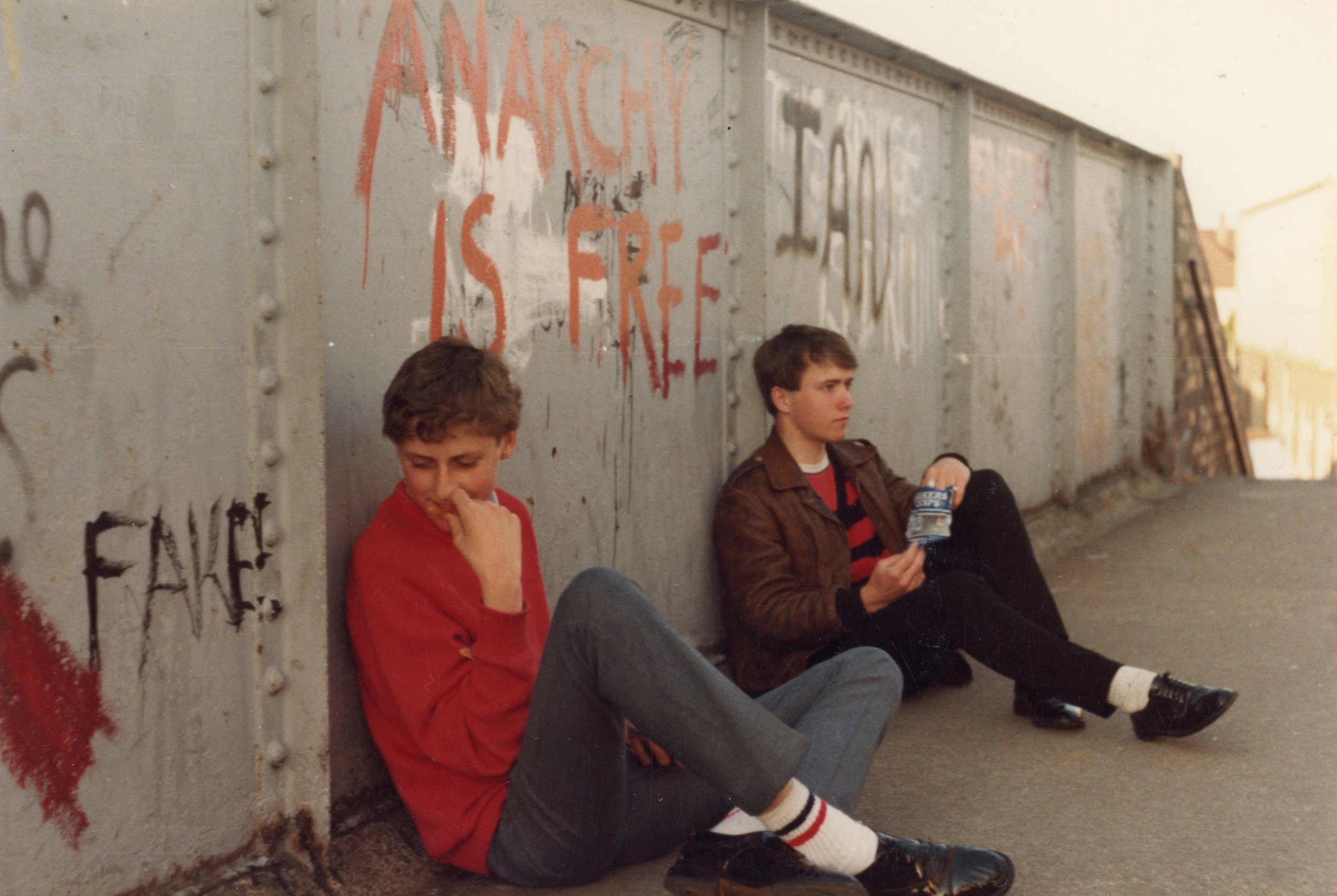
Grown Up in Coventry
Attracted by high levels of employment in the motor industry, the Coventry of the post-war years had a higher proportion of people under 25 than the national average. Young people meeting in factories and looking for ways to spend their free time flocked to the city's nightclubs. During the 60s the Locarno (now Central Library) was the place to go and the city had thriving jazz, folk and skiffle scenes. As well as the larger dance halls, the 1970s onwards saw an increasing number of pubs and smaller venues catering to the latest youth subcultures, such as punk, soul and disco.
The post-war period also saw migrants from Ireland and Commonwealth countries arrive in the city. Late night ‘blues parties’ run by and for Caribbean communities were held around Coventry, while early reggae and ska acts performed at city venues. It was the children of these first generation migrants who would go on to fuse their parents’ sound with Western influences and create two of Coventry’s biggest exports; British Bhangra and 2 Tone.
“Coventry,
North of London, South of Manchester, Heart of England.”
As part of the ‘Grown up in Britain’ campaign, the Museum of Youth Culture has visited Coventry’s markets and community centres to collect photos and memories of growing up in the city over the last ten decades. We asked you to dust off the shoeboxes and search through your family albums to help us build a picture of youth culture in Coventry.
You told us about meeting your first girlfriend at The Climax and showed us a photo booth photo taken at Woolworths in 1973. You showed us a picture of going to
your first gig - seeing Deep Purple at the NEC in 1991 and saving up all your dinner money to pay for the ticket. We heard about meeting husbands and wives, dancing Saturday night away and working in the factories. From the generations who grew up riding the merry go round in Coventry Retail Market and gigs at the Golden Cross to the best place to get chips after a night out - Parson’s Nose, so we’re told.
Youth Culture Through the Decades
1920s
Explore the rise of jazz music in our playlist
Music
Fashion
Find out how flappers transformed fashion
Food & Drink
Make your own Jazz Age cocktails
1930s
Entertainment
Read about the rise of radio & cinema
Music
Discover the Swing Era in our 30s playlist
Fashion
How did fashions change in the 30s?
1940s
Music
Fashion
How did wartime shortages affect fashion?
Grown up in Britain: 100 Years of Teenage Kicks is made possible with generous support from The National Lottery Heritage Fund as part of the Museum of Youth Culture’s lead project’ Amplified Voices: Turning up the Volume on Regional Youth Culture’. Thanks to National Lottery players, we have been able to collect and showcase the incredible, diverse story of youth culture across the breadth of Britain.
The digital exhibition has been curated by Joy Corcec.



